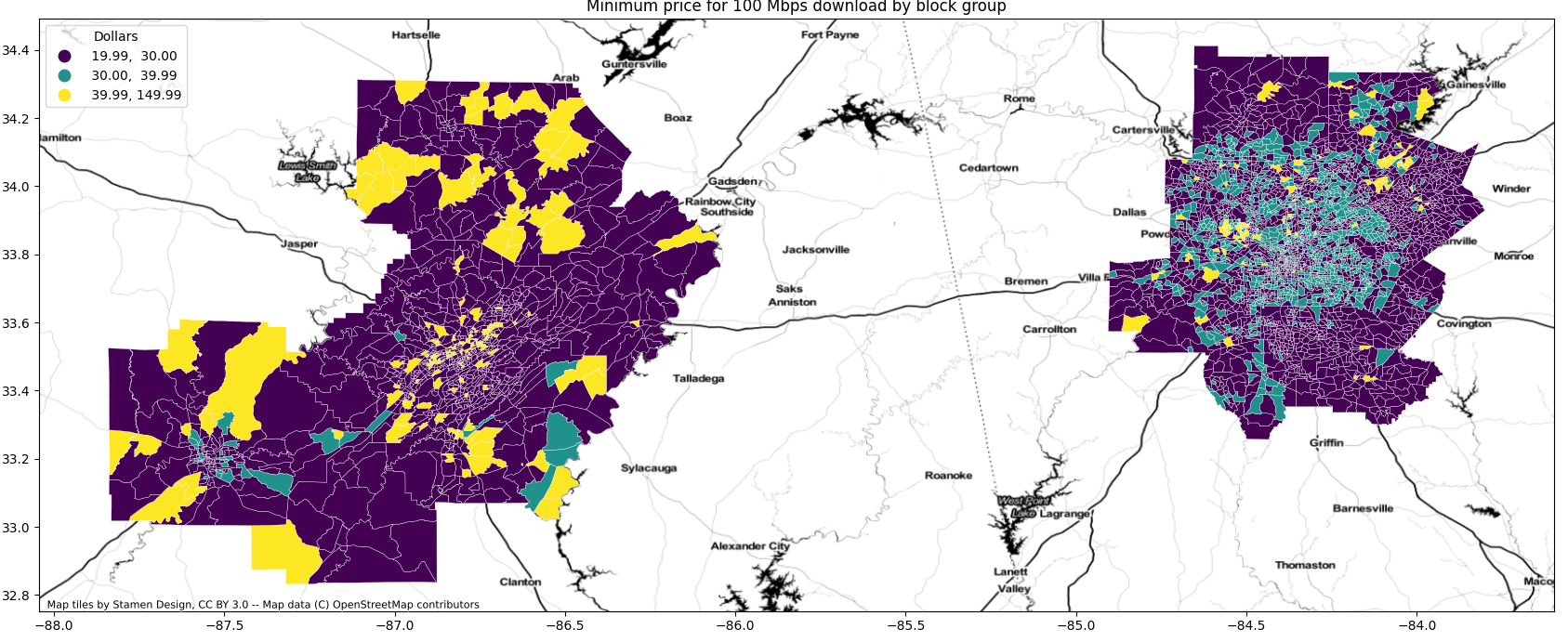Extracting Broadband Data in an IP-Throttled Web
🥟 Appetizer
We needed to extract broadband coverage data for counties surrounding the capitals of Alabama and Georgia, but the source website aggressively blocked IP addresses after detecting high traffic. This made large-scale data scraping nearly impossible through conventional means.
🍲 Main Dish
To sidestep the IP throttling issue, we developed a novel scraping workflow that avoids hitting the same endpoints repeatedly:
- Rather than pulling bulk datasets directly, we reverse-geocoded incrementally spaced latitude-longitude coordinates and delayed sampling to retrieve addresses block-by-block.
- This allowed us to systematically gather coverage data at the block group level without tripping anti-bot protections.
flowchart TD
A[Select GEOIDs to parse] --> B{Data @ geography
level exist?}
B -- Yes, move to next --> A
B -- No --> C[Generate n </br> points inside shape]
C -- Lat, Lon --> D[Reverse </br> geocode]
D -- Address --> E[Query </br> Broadband Website]
E --> G{At least one </br> query success?}
G -- No, n*=2 --> C
G -- Yes --> H[Save to file]
H --> I{More data to </br> extract?}
I -- No --> J[Done]
I -- Yes --> A
- We tested multiple VPN approaches, and found that IP rotation tools like Surfshark’s were not reliable overnight—often stalling or failing to refresh, making them unsuitable for unattended scraping.
- A tailored approach for simulating human browsing behavior—combined with measured pacing—enabled us to collect data from the website in a respectful and non-intrusive manner.
🍵 Aftertaste
The final workflow allowed us to successfully extract 100% block-group level coverage for the targeted regions:

🍽️ Final Bite
When brute force breaks down, precision wins. In scraping, as in design, knowing where to poke often matters more than how hard you push. Sometimes, the cleverest path is the one that mimics how humans would look things up—just with a lot more patience.
Enjoy Reading This Article?
Here are some more articles you might like to read next: